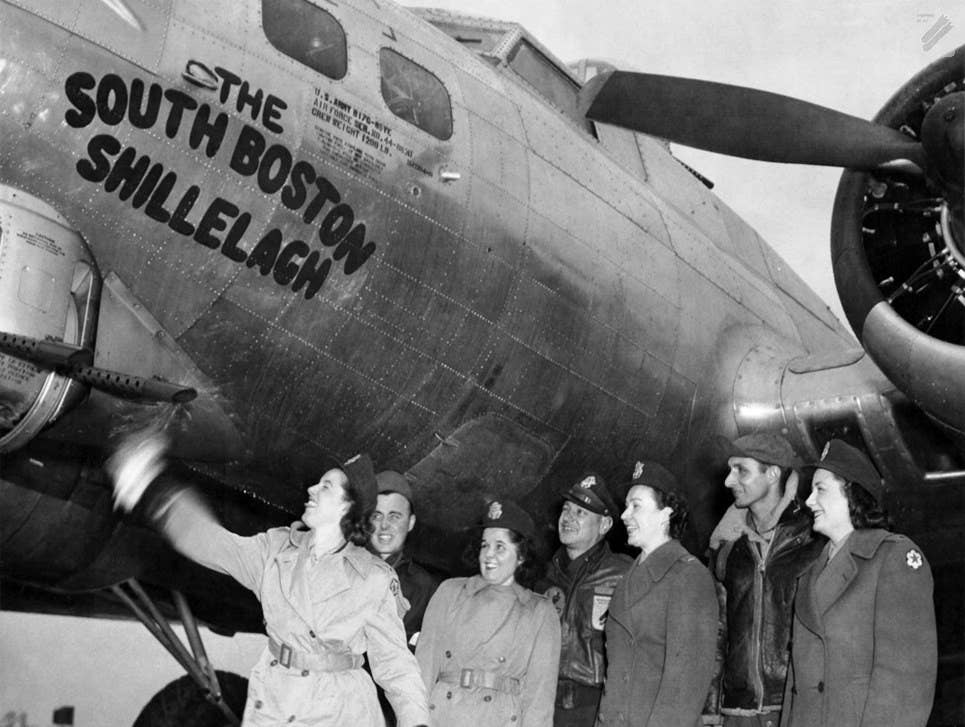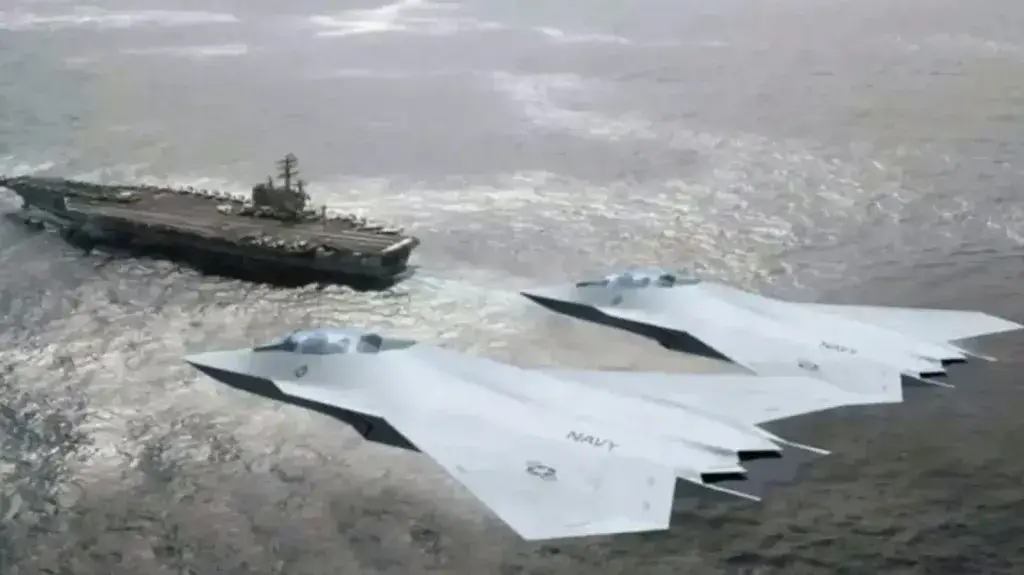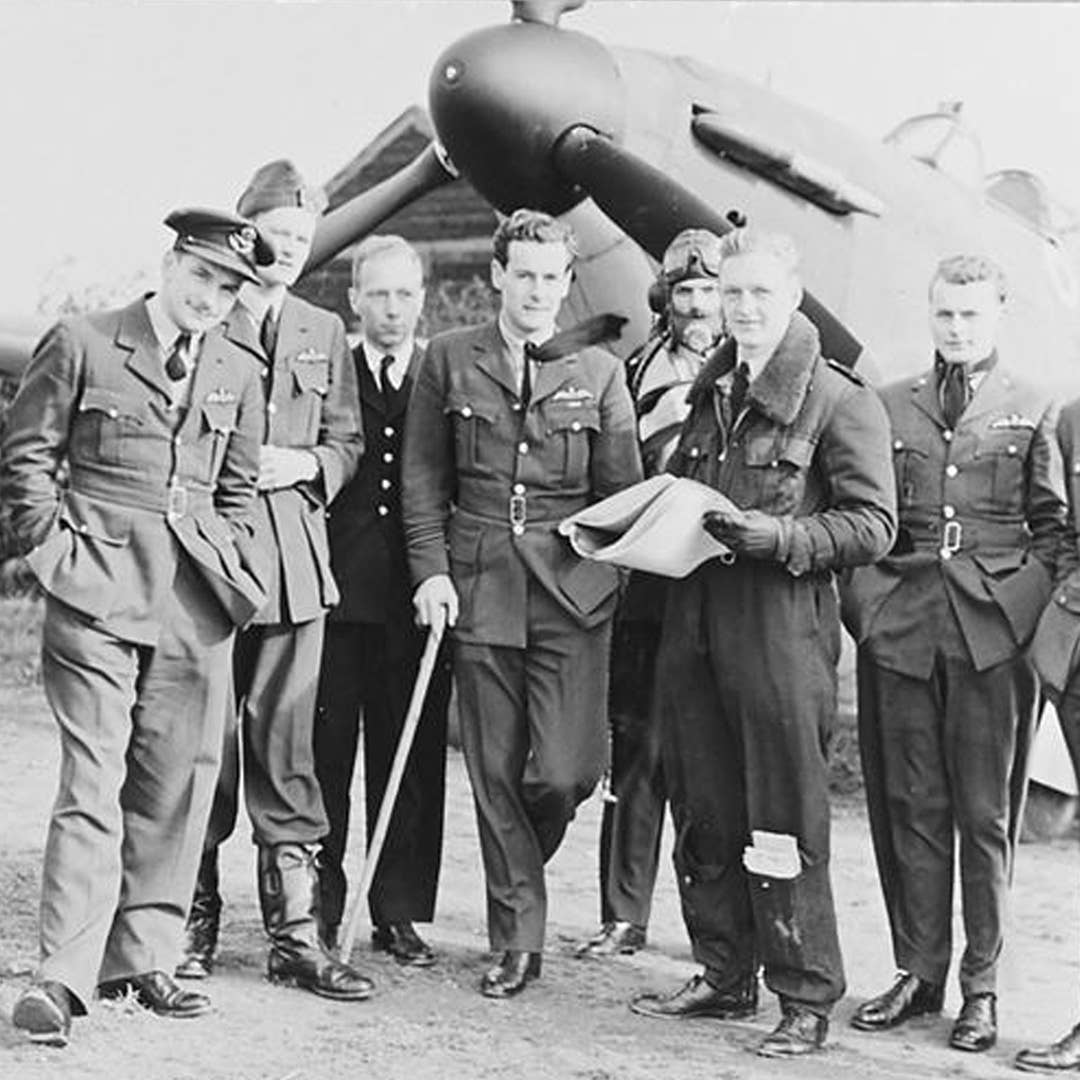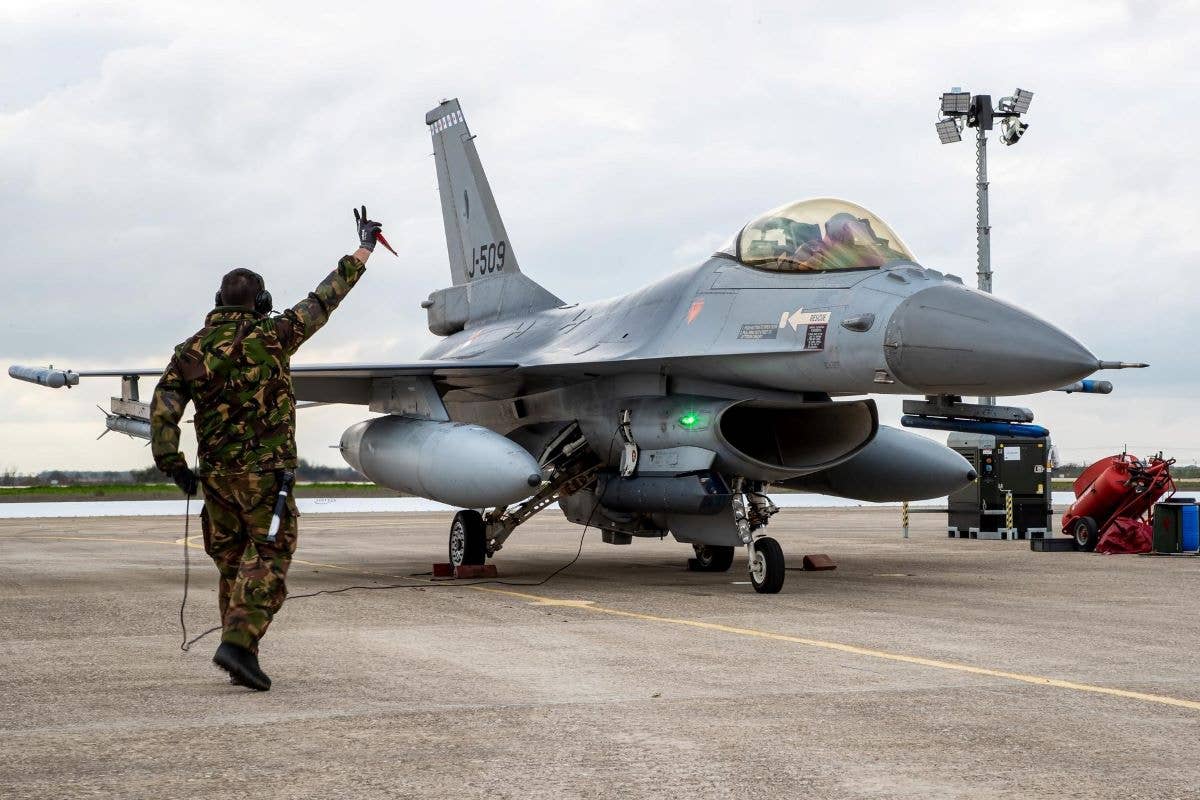Remembering the Mighty Men of the 381st Bomb Group
The all-volunteer museum honors the memory of the 381st Bomb Group, which was stationed at the Ridgewell Airfield in England.

B-17 ‘The South Boston Shillelagh’ [Courtesy: Ridgewell Airfield Commemorative Museum]
In the fall of 2020, I was researching a story about Texas Raiders, the B-17 owned by the Commemorative Air Force Gulf Coast Wing. The aircraft, which is still airworthy, is painted in the colors of the U.S. Army Air Force (USAAF) 381st Bomb Group. All I knew about the 381st is that it had been based at Ridgewell Airfield in England during World War II.
Lucky for me there is a Facebook group, “Bomb Group at Ridgewell During WW2,” that provides a wealth of information. The page is loaded with requests for information from people trying to learn about their family members who served there, and posts from people who have come across military records, personal items that belonged to a serviceman, newspaper clippings, battle reports, letters home, and photographs of daily base life.
While looking through photos on the social media site, I spotted a black and white photo identified as Lt. Colonel William J. Reed, who was stationed at Ridgewell. He looked familiar. I grew up with a family named Reed. Mr. and Mrs. Reed were friends of my parents. I went to school with the Reed kids. Dad said Mr. Reed's father had served in World War II in the Army Air Corps. I never met Grandpa Reed, but in the photograph I saw his son and grandchildren, who all have a distinctive smile.
Pulling further on the loose thread, I located his granddaughter on social media, and emailed her the image. She confirmed that was her “Pop” and he had been the executive officer of the 381st Bomb Group. Small world, eh?
Runways and Bombers
Ridgewell, where the 381st was based during the war, is located 7.5 miles northwest of Halstead, Essex, in England. The airfield and base was opened in 1942 with three intersecting runways of 6,500 feet each, 36 hardstands, hangars, barracks, and outbuildings. It was designed for heavy bombers flown by the Royal Air Force (RAF) Bomber Command.
In June of 1943, the USAAF's 381st Bombardment Group, which was assigned to the 8th Air Force, arrived from Pueblo, Colorado. The group flew Boeing B-17 Flying Fortresses, with tails sporting the Triangle-L insignia. The 381st was made up of several squadrons, each with its distinctive fuselage code: the 532nd (VE), the 533rd (VP), 534th (GD), and 535th (MS).
"Many of the people who drive or walk across the airfield have no idea of what went on under their feet."
Sarah Allen, Ridgewell Airfield Commemorative Museum volunteer
For a time, the RAF and USAAF shared the base, and the facilities were expanded to accommodate the influx of aircraft and men. During the expansion, the number of hardstands was increased to 50 and more barracks and other buildings were added.
When the war in Europe ended in 1945, the 381st returned to the U.S. Ridgewell Airfield was closed and the land returned to private ownership as a farm. The only parts of the base that remain today are the roads and a Nissen hut that had been the hospital.
The hut has been converted into the Ridgewell Airfield Commemorative Museum, which today, along with several memorials on the property, honor those who served there.
Because there is very little left of the airfield today—as most of the buildings and infrastructure, including the hangars, control tower, runways, and hardstands, are gone—the former base has been all but forgotten.
"Many of the people who drive or walk across the airfield have no idea of what went on under their feet," said Sarah Allen, one of the volunteers at the museum.
"I first became aware of Ridgewell Airfield as a teenager, over 40 years ago now. I used to spend a lot of time cycling around the lanes and around what was then the perimeter track for the airfield—now a public road," she said. "Even before I learnt any of the history of the airfield, I knew that something significant had happened on and around that land. There is definitely an atmosphere to the place!"
A Museum Is Born
The Ridgewell Airfield Commemorative Museum was created in 2000 as a means to protect and preserve the legacy of the men who lived, worked, and flew from Ridgewell.
According to Paul Bingley, the chairman of the museum, it was the life's work of Tony Ince, who had been a local schoolboy during the war.
"He befriended some of the 381st’s ground crews and built up a collection of wartime memorabilia, which he exhibited around Essex," Bingley said. "Finally, he got permission to display his collection in a small section of the current museum building. Sadly, he passed away before seeing the fruit of his labors. The museum continued on, thanks to his friends, including Jim and Jenny Tennet, together with Alan and Monica Steel, and several others."
"Around 2014, Alan Steel obtained permission from the landowner to use the entirety of the Nissen hut," Bingley said. "Over the next few years, significant renovation work was carried out, including the cladding of the ceiling; the addition of a timeline of events; and a large map/diorama of the airfield, which now greets visitors as they arrive through the door."
There is no cost to enter the museum, which is funded by donations.
"In 2017, we were named ‘runners-up’ in the 2017 Museums + Heritage Awards’ 'Project on a Limited Budget' category," Bingley said. "This has led to more individuals donating and loaning items for display. We are particularly keen on personal items, as the ethos of the museum is to tell their stories. We can see just how deeply these stories resonate with visitors."
Bingley said he first learned about the 381st in 2003 when he read the book Combat Crew by John Comer, who had served as an engineer and top turret gunner with the 381st at Ridgewell.
Bingley was surprised. At the time, he was living just a few miles from Ridgewell, “Yet I knew nothing of the base or the 381st. It was the start of a long journey of discovery. The more I discovered, the more I wanted to know," he said.
Bingley, who works in aviation cargo operations, said his day job has given him a greater appreciation of the logistical challenges of moving airplanes and people and cargo around Europe and operating such a large base.
"It could accommodate around 3,000 people at any one time—we don’t know exactly how many were based at Ridgewell throughout its entire existence," he said. "It is stated in Roger Freeman’s Airfields of the Eighth; Then and Now that public roads use more old taxiways at Ridgewell than on any other Eighth airfield."
Ridgewell is acknowledged as Essex’s only long-term heavy bomber base during World War II. While other Essex airfields hosted a variety of different aircraft types, Ridgewell was only home to Short Stirlings (the RAF's first four-engine bomber) and the USAAF B-17 Flying Fortresses.
The base was located in a rural area straddling the border of Essex and Suffolk counties. The airfield is in Essex.
"It is a little hard to find, as is the museum, which is tucked away from a main road," Bingley said. "The museum building is a wartime Nissen hut that was once part of Ridgewell’s base hospital, so it is an exhibit in itself. However, it is also on private land and is the property of a local landowner, so we’re unable to use permanent signs to direct the general public."
Bingley noted that the landlords, Robert and Vanda Root, "have been unstinting in their support for the museum."
Because of the limited space, museum volunteers have learned to be creative with the donations they receive, as they recognize how important they are to the story of the 381st.
"In 2021, we were sent an entire collection of uniforms, medals, and personal items from the U.S. by the son of a 381st tailgunner," he said. "His father survived 30 missions before being transferred to the Pacific, which he also survived. It’s an awesome collection, which includes his secret combat diary, sunglasses, and ‘short snorter.’”
Short snorters were paper currency signed by people you flew with or people you met. If someone signed your short snorter and you couldn't produce it upon request, you owed him a dollar or a drink, aka—a short snort. They were rolled up and depending on how many people you flew with or met, they could grow to be as thick as cigars.
If You Visit
The museum is open on the second Sunday of the month, between April and September, although sometimes it will open for group visits and for the relatives of those who served at Ridgewell. There are five volunteers who make up the core group of museum staff, and others are ready to assist as they have time.
"We have an in-house historian," Bingley said, "although we all try to assist in research for those who request it. The stalwart staff for most of the time the museum has been in existence are husband and wife, Alan and Monica Steel. They’re the glue that keeps everything together."
Ridgewell stopped being a military airfield when the 381st left in 1945. The RAF briefly used the facility for bomb storage and disposal, then decommissioned the base in 1957. The land was reverted back to farm land for the most part, Bingley said, with one notable exception.
"The Essex Gliding Club continues to use Ridgewell during the summer months, and has even painted one of its gliders in the markings of the 381st. It has also given pleasure flights over the base to veterans and their relatives," he said.
Museum volunteers also organize guided walks for visitors, who are often the families of veterans.
"This really gives them a sense of the scale of the airfield, and they are able to see the remaining buildings and the stories connected to them. They really are walking in the footsteps of their fathers and grandfathers," Allen said. "We are always very honored and privileged when we meet veterans' families, it is always emotional for us and more so for them. They often go and stand alone in quiet reflection."
One of those visitors was John Weston, who arrived at Ridgewell in June 2022. Weston had been connected to the 381st Facebook group, and when he was in the United Kingdom for work, he took the opportunity to visit.
"My father was John Wezowicz, a pilot/aircraft commander in the 533rd who flew 31 missions in early 1944 and was based at Ridgewell. My dad later changed his name to Weston and remained in the USAF [U.S. Air Force] until retiring in the 1970s. He passed away in 2016 at 99. It was a very emotional experience, both being able to walk in my father's footsteps and also seeing the dedication that Paul, Alan, and others have in ensuring that the memory of the 381st and veterans stays alive."
Most visitors—they get about 100 a day when they are open—do some research before they come to Ridgewell. Sometimes the visitors surprise the volunteers with what they bring.
"For example, we were recently handed a one-hour, 16 mm vintage movie of Ridgewell and its sites that was filmed by one of the 381st’s senior officers across his two years at Ridgewell," Bingley said. "To say we were all overcome, is an understatement. It was almost like finding a lost Beatles’ song."
Sometimes relationships are forged between visitors, such as the day when two American families came to visit.
"Neither knew the other was coming, or had any contact before," Bingley said. "Yet, their veteran fathers and grandfathers, who had both passed away, were in the same squadron, and at exactly the same time. There is no doubt they would have known each other. The families also discovered another connection: one of them lived in the town where another from the other family had been born. Sometimes, strange forces [are] at work. I’m lucky to have made lifelong friends with several of those whose fathers were once based at Ridgewell. I find it endlessly fascinating that something that happened 80 years ago can still have such a profound effect on us today."
Virtual Memorial Meets Virtual Library
If you have access to a computer and the internet, you can have access to Ridgewell. Alan Steel created the Bomb Group at Ridgewell During WW2 on Facebook in 2013. Today, it has more than 2,000 members. The page is "dedicated to all the Men and Women who served with the 381st Bomb Group based at Ridgewell Airfield, Essex, UK during WW2," and on it you will find pages and pages of information, often in PDF form that make research fairly easy. Members are always adding items.
“"They really are walking in the footsteps of their fathers and grandfathers." ”
Sarah Allen, Ridgewell Airfield Commemorative Museum volunteer
One of the frequent contributors is Don Madar, an author and historian. Madar has written several books about military history, all of them with a family connection. His interest in the 381st is tied to his uncle Andy Piter Jr., a member of a ground crew at Ridgewell who did not make it home.
Piter arrived at Ridgewell on June 23, 1943. "That day, improperly loaded bombs on the B-17 #42-30024 Caroline exploded, killing 23 people including a civilian. I have my uncle's notes on the accident," Madar said. His uncle was not injured in the explosion—he would spend more than a year more at Ridgewell.
While flight crews were rotated home after a set number of missions—at first it was 25, then it was raised to 35 missions—there was no such rule for ground crews, Madar said, although as the war in Europe was starting to wind down, duty schedules relaxed a bit.
"My uncle was one of 31 men killed just 15 days before the end of the war in an airplane crash on the Isle of Man. They were heading to Northern Ireland for a week's leave."
Deadliest Crash on the Isle of Man
On April 23, 1945, a B-17G, 43-38856, flown by a two-pilot crew was transporting 29 servicemen. Many of the men had been at Ridgewell since the 381st arrived in June 1943. Keep in mind the usual crew complement of a B-17 was 10 men.
The aircraft took off at 8 a.m. and headed north. The flight was supposed to take about two hours. At approximately 10:15 a.m., the B-17 was on the northeast coast of the Isle of Man at an altitude of approximately 500 feet.
"The pilot was Charles Ackerman," Madar said. "He had previously lost a friend in that location in a crash, and there are those who think he was flying low to get a better look of where his friend went in and misjudged the altitude. The airplane failed to clear the hill by about 300 feet. It was controlled flight into terrain. The airplane exploded in a fireball. It was—and still is—the deadliest airplane crash on the Isle of Man."
The death of Andy Piter, especially so close to the end of the war, had a profound impact on the family, Madar said.
"My uncle was the only son of six children. He'd been sending his money home and he bought his parents a house," he said. "They had a room waiting for him."
The bodies of the servicemen were painstakingly recovered from the Isle of Man, returned to Ridgewell for identification, then buried at the military cemetery in Cambridge.
"They were later disinterred and brought back to the United States for burial at home," Madar said.
Madar has made the trip to Ridgewell and roamed the places where his uncle spent his last hours. He said he was struck by the enormity of the facility, and noted that even though the runways were removed decades ago, they can still be discerned from the air as there is a faint imprint of them.
“"He'd been sending his money home and he bought his parents a house. They had a room waiting for him." ”
Don Madar, nephew of a Ridgewell ground crew member
As part of the trip, he walked the parts of the base that had been the athletic fields, the hangars, and looked for the area where his uncle's billet had been.
"When I was there, Paul Bingley and I found where Andy lived, and when I walked by there, I got goosebumps and started to cry," Madar said. "It hit me. It was his last residence, where he would last have a smile. The other significant thing for me was the morgue, as morbid as that sounds, as that was the last place they were before their bodies were shipped to Cambridge."
Madar said three of Andy's sisters are still alive, and they and Madar have plans to return to Ridgewell to walk in the footsteps of Andy Piter Jr. and to remember him on the 80th anniversary of the crash.
"We wanted to go for the 75th anniversary, but the pandemic got in the way," he said.
Remembering the Bomber Boys
According to Bingley, while Americans view all airmen as heroes, the men in the RAF Bomber Command were not seen in the same light, as the attention was more focused on the pilots who flew fighters.
"The men of RAF Bomber Command were only given their own memorial 10 years ago," he said. "Winston Churchill didn’t help by failing to mention them in his victory speech, as he had done with ‘The Few.’ Museums like Ridgewell help to tell the story of those bomber boys who answered the call of duty—most of them volunteering, before serving thousands and thousands of miles away from their friends and families," he said.
"Of course, many never returned home. We should never forget that," he added.
While there are other veterans associations and organizations that provide educational support to the children of those who served with the 381st, there aren't many places to visit where their family members once served.
"That is why it’s so important that the Ridgewell museum is preserved and continues to be used as a focal point for the families," Bingley said. "It is an honor to be a part of it."
How To Locate Information About a Relative Who Served
- Use an internet search engine. The internet has greatly expedited the task of locating information about someone who served in the military. If you have the person's name and the war they served in, often that's all you need to begin your search. Commemorative associations often have their own webpages and the members can be very helpful.
- Facebook may be a resource. There are many groups dedicated to the preservation of information about military organizations. Often the persons involved have a familial interest in the organization and are open to sharing stories.
- Consult museum archives. Museums may have detailed information about military groups. For example, if the city has or had a large military component during the war, there is a pretty good chance the local museum will have photographs and records from that time.
- Consult university archives. Some universities have information as they have records of what the university did during the war. Others are repositories for select military groups, such as Texas Women's University, which is the keeper of information about Women Airforce Service Pilots. Embry-Riddle Aeronautical University has information about the training of British pilots on American soil (No. 5 British Flying Training School).
- Don't forget about memorabilia collectors. You may be lucky enough to find a collector of memorabilia, who are often historians because they research the items they find. They may be able to point you in the right direction—and may even help in your search.
- Veterans centers can also be helpful. They often keep written or recorded accounts of the experiences their members had. They also hold reunions, and if you're really lucky, you may actually find someone who served with your family member and can tell you stories.

Sign-up for newsletters & special offers!
Get the latest FLYING stories & special offers delivered directly to your inbox






